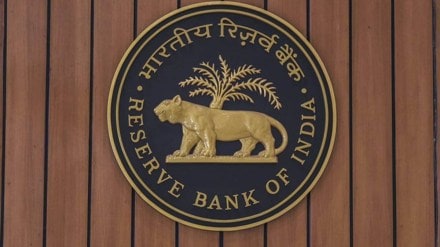By Vivek Belgavi,
Through the course of history, money has travelled from being issued as gold or silver coins to being issued as paper-notes and metal coins, to, now, becoming available electronically via methods like bank transfers and Unified Payments Interface. Technology has made it possible for us to have true digital equivalence for physical cash by using cutting-edge cryptography and blockchain, and this allows a central bank digital currency (CBDC) to write a new chapter in money’s history.
The Reserve Bank of India (RBI) recently released the concept note for the digital rupee, India’s version of a CBDC. The note outlines the need for a CBDC given the changing economic landscape, and coexistence with the widely-adopted payment rails in the country, apart from considerations on design, issuance, distribution, technology platform and cybersecurity. The note also articulates, among other matters, the possible impact on monetary policy, liquidity management, legal implications.
As private virtual currencies gained popularity, central banks across the world commenced the exploration of launching digital versions of their currencies, i.e., CBDCs. The key value proposition of CBDCs is to provide a risk-free, central bank-backed asset that has intrinsic value and can be used for streamlined payments and settlement services, with various use cases from a wholesale and retail perspective. About 105 countries representing 95% of the global GDP are at various stages of exploring CBDC. Out of these, 36 central banks are considering retail and wholesale CBDCs, and 18 central banks are considering retail.
As for India, RBI’s Digital Payment Index, at 349.30 (March 2022) vis-à-vis March 2018 as the base year (index = 100), indicates substantial growth in digital payments in the country. Yet, the circulation of currency witnessed an increase (currency-to-GDP was 10.7% in FY18 and 13.7% in FY22). A pilot survey conducted by RBI across six cities to gauge payment behaviour of individuals indicated that cash still remained the most preferred mode of payment (more than 50% for transactions of Rs 500-2,000, and going up to 87% for transactions under Rs 100).
CBDC, a digital form of cash, has the potential to leverage a mix of the growing adoption of digital means and the affinity of the masses towards cash. This will contribute towards the objective of a “less physical cash” society. Further, with the adoption of the CBDC, the cost of printing and circulating physical cash will reduce. This cost-turned-savings can be allocated towards building a robust, scalable and secure infrastructure for the CBDC.
While RBI explores what type of CBDC is needed—retail and wholesale—both options have their use-cases and accompanying benefits. A retail CBDC can foster increased digitalisation of small-value payments. Further, it can assist in furthering the cause of financial inclusion through the availability of digitised cash in the remotest parts of the country, along with programmable money towards aid distribution. The CBDC can impart increased efficiency to government schemes like MNREGA and others, through the Public Finance Management System. Offline payments using a CBDC should be further explored as it will help in bridging the connectivity gap as experienced in the existing retail-payment systems in remote and Tier 3+ locations. It can also transform the way small-value retail payments are happening in the country as it can enable faster checkouts.
Overlay services of payment rails like UPI will need to coexist with the CBDC, as also with the existing payment systems. As the adoption of the CBDC rises in the country, it will emerge as an alternative payment system, thereby providing resilience to the existing payment system.
Also Read: The intolerance brigade
Similarly, as remittances, both domestic and cross-border, continue to grow in the country, wholesale CBDC again will bring in efficiency based on faster transmission and settlement of funds between two parties. While various central banks are conducting their pilot programme for CBDC-based cross-border remittances, SWIFT has also very recently released its framework for the same. Participation in such collaborations will be important, as this will aid in deriving important lessons that will contribute towards the development of similar frameworks in the country.
It is imperative that the Multilateral Net Settlement Batch (MNSB), operated by RBI on RTGS, is scaled up to support wholesale CBDC for the settlement of funds among financial intermediaries and the payment system operators.
While there are many design choices, RBI’s concept note shows the current preferences. The central bank will be looking at CBDC for both retail as well as wholesale. An intermediate model would be preferred where RBI issues CBDC to licenced intermediaries who would further distribute it. This is similar to the current model of distributing cash. CBDC would be non-interest-bearing to maintain similarity with cash as well as to remove competition with interest-bearing deposits that banks run. The retail CBDC would be token-based while the wholesale CBDC would be account-based. Finally, CBDC will maintain anonymity, similar to cash.
The CBDC is going to be a game-changer for the Indian digital payment ecosystem from a resilience perspective. However, certain unknowns still exist from the adoption, performance, and scalability perspectives. To mitigate these risks, it is expected that the regulator takes a graded approach towards implementation. Underlying technology providers are going to be important stakeholders during implementation with industry participants working closely with the regulator and technology providers for pilot rollout and extensive testing.
With the CBDC being “unknown” for all the stakeholders, the lessons derived from the pilot projects will be key. It will help in firming up the numerous variables. This may necessitate a longer roadmap than envisaged towards implementation.
The author is Partner and fintech leader, PwC
